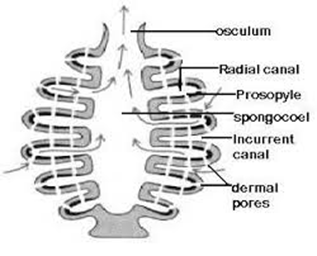Muscle Types, Structure & Proteins Explained Simply
All About Muscles: Types, Structure, and Contractile Proteins Explained
The act of movement, or changing position by one or more parts of the body, is a vital feature of living organisms. The study of movement is called Kinesiology, while the scientific study of muscles is known as Myology or Sarco-logy. Muscles are specialized tissues that help us perform different kinds of physical activity—from walking to heartbeat regulation.
Let’s understand the types of muscles, structure of muscle fibers, and contractile proteins that make movement possible.
Types of Muscles
Muscles can be classified into three main types:
-
Voluntary or Skeletal Muscles
-
Visceral or Smooth Muscles
-
Cardiac Muscles
Let’s begin with voluntary muscles, which we can control by our will.
💪 Need Detailed Notes on Muscle Types & Proteins?
Confused between skeletal, cardiac, and smooth muscles? Want clarity on actin, myosin, sarcomere structure and muscle contractions?
Get concise and exam-ready notes—perfectly explained for quick understanding!
👉 Mail us at: bionotesandassignments@gmail.com
Subject: Muscle Types & Structure Notes Request
- 🧠 Simplified Diagrams & Tables
- 🔍 Key Differences Highlighted
- 📌 Suitable for: NEET • Boards • Assignments
- 🕒 Fast Response | 💯 Trusted by Students
Voluntary Muscles
-
Skeletal muscles constitute around 40 to 50% of the total body mass in an average healthy adult.
-
They are connected to the skeletal system and are therefore also called skeletal muscles.
-
These muscles show transverse lines (striations) at regular intervals under the microscope.
-
As their contraction is controlled by our will, they are also called voluntary muscles. These muscles help animals (including humans) move, making them also known as locomotory muscles.
-
Skeletal muscles are attached to bones by a tough cord of connective tissue called a tendon.
Structure of Muscle Fibre
Each muscle is made up of muscle fibers which are cylindrical or tubular in shape. The outer membrane of a muscle fiber is called the sarcolemma.
-
Inside the sarcolemma, each muscle fiber contains multinucleated cytoplasm, known as sarcoplasm.
-
The sarcoplasm is filled with myofibrils, which are fine thread-like structures arranged in parallel.
-
Each myofibril has alternate dark and light bands known as:
-
I-band (Isotropic Band) → contains actin filaments
-
A-band (Anisotropic Band) → contains myosin filaments
-
These bands give muscle fibers their characteristic striped (striated) appearance.
-
In the center of each I-band is a thin Z-line, which bisects the band and helps in the structural arrangement of the myofibrils.
-
The A-band contains thicker filaments and has a fibrous membrane at the center called the M-line.
-
The portion of the myofibril between two successive Z-lines is known as a sarcomere, which is the structural and functional unit of muscle contraction.
Sarcomere = 1 A-band + two half I-bands
Structure of Contractile Proteins
Two major proteins are responsible for muscle contraction: Actin and Myosin.
Actin Protein
-
Each actin filament is composed of two F (filamentous) actin chains that are helically wound around each other.
-
F-actin is a polymer of G (globular) actin units.
Tropomyosin
-
Tropomyosin is a type of contractile protein that lies in the groove of the actin helix.
-
In the relaxed state, it covers the active sites on actin, preventing unwanted contractions.
Troponin
-
Troponin is a complex of three subunits:
-
Troponin I
-
Troponin T
-
Troponin C
-
-
It is attached to one end of the tropomyosin molecule and is essential in the calcium-binding process that triggers muscle contraction.
Myosin Protein
-
Each myosin filament is also a polymerized protein made of several monomers.
-
A monomer of myosin (also called meromyosin) has two parts:
-
A globular head with a short arm
-
A tail called heavy meromyosin (HMM)
-
-
The globular head is enzymatically active. It contains ATPase activity and binding sites for both:
-
ATP (provides energy)
-
Actin (binds for contraction)
-
-
The short arm functions as a cross arm, helping the myosin head form a bridge with actin during contraction.
How Muscle Contraction Works
Muscle contraction is a result of the sliding filament theory, which states that actin filaments slide over myosin filaments, shortening the sarcomere and contracting the muscle. This process requires calcium ions (Ca²⁺) and ATP for energy.
During contraction:
-
Calcium binds to troponin C
-
This shifts the tropomyosin, exposing actin’s binding sites
-
Myosin heads attach to actin and pull the filaments inward
-
This results in muscle shortening and movement
Conclusion
Muscles are fascinating biological machines that help in movement, posture, and even vital functions like heartbeat and digestion. Understanding their types, structure, and the role of contractile proteins helps us appreciate how the body performs complex movements with precision.
From the skeletal muscles that allow us to walk and write, to the cardiac muscles that beat without rest, each muscle type plays a crucial role in survival. The study of muscle fibers and proteins like actin, myosin, tropomyosin, and troponin provides insight into how energy is converted into motion inside our bodies.
So the next time you stretch, walk, or run—remember the amazing biology that makes it possible!
🔗 Top Internal Links on Biology Blog
| Topic | Link |
|---|---|
| Types of Muscles: Structure, Proteins, and Functions | Read Now |
| What is Pollination? Types and Mechanism | Read Now |
| Short Notes on Anatomy of Cockroach | Read Now |
| Why Are Living Organisms Classified? | Read Now |
| 7-Celled 8-Nucleate Structure Ovule With Labelled Diagram | Read Now |



This comment has been removed by a blog administrator.
ReplyDelete